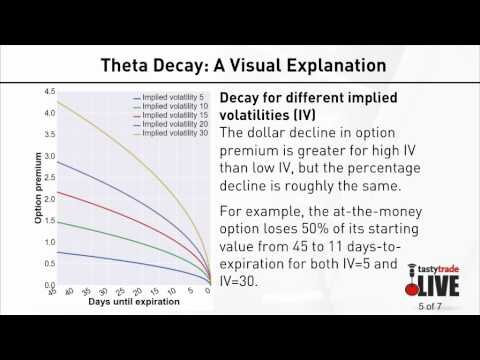
The pattern does show strength, but is more likely a continuation at this point than a reversal pattern. Bullish engulfing candlestick is a commonly spotted pattern consisting of two candlesticks. It contains a black candlestick pattern in the first place and a white in the second candle, which will be easily engulfed.
You can see that this pattern looks very much like the “morning doji star” pattern. Almost the same as previous, but the second candlestick is a doji. The gaps are not an absolute must for this pattern but the reversal signal will be stronger if they are present. It’s also a good idea to keep track of what the trading volume is telling you.
Additionally, the first candle will be green, and the third one will turn red, as this pattern signals the end of a rally and the beginning of a downtrend. The Harami candlestick pattern is usually considered more of a secondary candlestick pattern. These are not as powerful as the formations we went over in our Candlestick Patterns Explained article;…

A gravestone doji is when the open and close are at the low of the day. Although this formation can be seen at bottoms, it’s more adept at calling tops, Nison has said. Traders will always look for multiple pieces of confirmation to give themselves a higher chance of a winning trade. Therefore these patterns will not guarantee success and will work better when there are other pieces of evidence to support a reversal possibility.
Candlestick bearish reversal patterns
The pattern was immediately confirmed with a decline and subsequent support break. Use oscillators to confirm weakening momentum with bearish reversals. Negative divergences in MACD, PPO, Stochastics, RSI, StochRSI or Williams %R indicate weakening momentum and can increase the robustness of a bearish reversal pattern. In addition, bearish moving average crossovers in the PPO and MACD can provide confirmation, as well as trigger line crossovers for the Slow Stochastic Oscillator. So, to help you take the first steps in the right direction, here, we will share our advanced cheat sheet candlestick patterns so you can use it whenever you need.
The third long white candlestick provides bullish confirmation of the reversal. Micromuse (MUSE) declined to the mid-sixties in Apr-00 and began to trade in a range bound by 33 and 50 over the next few weeks. After a 6-day decline back to support in late May, a bullish harami (red oval) formed. The first day formed a long white candlestick, while the second formed a small black candlestick that could be classified as a doji. The next day’s advance provided bullish confirmation and the stock subsequently rose to around 75.
The pattern does not indicate an exact point of reversal. Rather, it indicates that a reversal is likely to occur in the near future. The pattern is created by three trading sessions in a row with gaps in between. While each candle doesn’t necessarily have to be large, usually at least two or three of the candles are. BA provides us with another look at this bearish candlestick pattern in a different context.
4 stocks that signal bearish reversal on candlestick scans
The third long black candlestick provides bearish confirmation of the reversal. Time Warner (TWX) advanced from the upper fifties to the low seventies in less than two months. The long white candlestick that took the stock above 70 in late March was followed by a long-legged doji in the harami position. A second long-legged doji immediately followed and indicated that the uptrend was beginning to tire.
Below are three ideas on how traditional technical analysis might be combined with candlestick analysis. This formation is actually the result of prices rallying to new peaks at the candlestick opening. After that, the stock price, option, or crypto will reverse and can be seen on the candlestick chart. The significant difference between an abandoned baby and the morning star is the gaps on both sides of the Doji. The first gap down tells that the selling pressure stays strong.
Selling Options vs. Buying Options The Complete…
After a steep decline since August, the stock formed a bullish engulfing pattern (red oval), which was confirmed three days later with a strong advance. The 10-day Slow Stochastic Oscillator formed a positive divergence and moved above its trigger line just before the stock advanced. Although not in the green yet, CMF showed constant improvement and moved into positive territory a week later.
Such signals would be relatively rare, but could offer above-average profit potential. Bullish and bearish breakaway patterns are multi-candle chart formations that suggest a market reversal https://trading-market.org/ may occur. An actual breakaway is a five-candlestick formation that occurs in either an upward or downward trend and signals a trader to enter a position in the opposite direction.
Here’s Why CVR (CVI) Is a Great ‘Buy the Bottom’ Stock Now – Nasdaq
Here’s Why CVR (CVI) Is a Great ‘Buy the Bottom’ Stock Now.
Posted: Wed, 19 Apr 2023 07:00:00 GMT [source]
The bullish engulfing pattern is a rather simple pattern formed by two candlesticks. The first candlestick is bearish, and the second one is bullish. Just like the name suggests, the second candle engulfs the body of the first one.
Other aspects of technical analysis can and should be incorporated to increase the robustness of bearish reversal patterns. Notably, harmonic chart patterns bearish reversal candlestick patterns can also be classified as advanced candlestick patterns. When Bullish Harami declines, it is considered a potential bullish reversal pattern.
The reliability of this pattern is very high, but still, a confirmation in the form of a white candlestick with a higher close or a gap-up is suggested. The second candle should open below the low of the first candlestick low and close above its high. After a long bearish candle, there’s a bearish gap down. The second candle is quite small and its color is not important, although it’s better if it’s bullish. The third bullish candle opens with a gap up and fills the previous bearish gap.
Bearish reversal patterns appear at the end of an uptrend and mean that the price will likely turn down. Each candle should open within the previous body, better above its middle. An inverted hammer always requires further bullish confirmation. They show that although bears were able to pull the price to a new low, they failed to hold there and by the end of a trading period lost a battle with buyers. The signal is stronger if a hammer forms after a long decline in the price. The bullish reversal identifies a possible end to a bearish trend.
The second candlestick opens with a gap down, below the closing level of the first one. It’s a big bullish candlestick, which closes above the 50% of the first candle’s body. It’s a bullish reversal pattern that’s made up of three candlesticks.
The best way to trade bearish candlestick patterns is by combining them with price action trading strategies. Because the first candlestick has a large body, it implies that the bearish reversal pattern would be stronger if this body were black. This would indicate a sudden and sustained increase in selling pressure. The small candlestick afterwards indicates consolidation before continuation. After an advance, black/white or black/black bearish harami are not as common as white/black or white/white variations.
Its pattern is closely related to the ‘evening star’ but is believed to be a stronger signal as the middle candle is doji. The signal of this pattern is believed to be stronger than the signal from a basic ‘evening star’ pattern. Candlestick patterns are visual patterns, aiding traders to visualize when there is a movement in market sentiment. And this is the reason why several traders prefer candlestick chart to order trading tools. Nonetheless, it is advisable to ensure that any trend reversal indication tallies with other popular technical trading tools before taking major action. All of these patterns are characterized by the price moving one way, and then candles in the opposite direction appear that significantly thrust into the prior trend.
- Although shadows are permitted, they are usually small or nonexistent on both candlesticks.
- Finally, the asset goes up one final time and usually continues rising.
- However, the differentiating factor between both candle pattern is the location.
- Bearish confirmation came the next day with a sharp decline.
- It is believed that the Japanese formed candlestick patterns for rice trading.
HowToTrade.com helps traders of all levels learn how to trade the financial markets. As the prices rise, this pattern becomes important for the reversal to the downside. Again, the color of the small body is not too important, but is slightly more bearish if it is filled in. The long shadow or wick on the upper side indicates that there is a robust batch of sellers as the market trades higher, but not very long. Afterward, one more trend lowers from the head and pushes below the left shoulder.
They should be combined with other analysis such as technical indicators, fundamental analysis, and market conditions. This pattern helps the traders to square their buy position and enter a short position. Western chartists call this a “key reversal.” It’s just a little easier to see in a candlestick chart.
